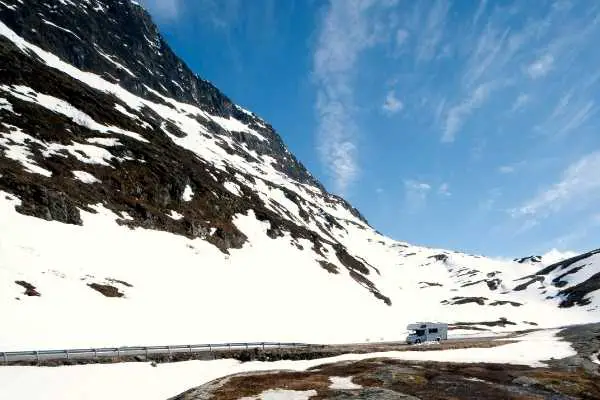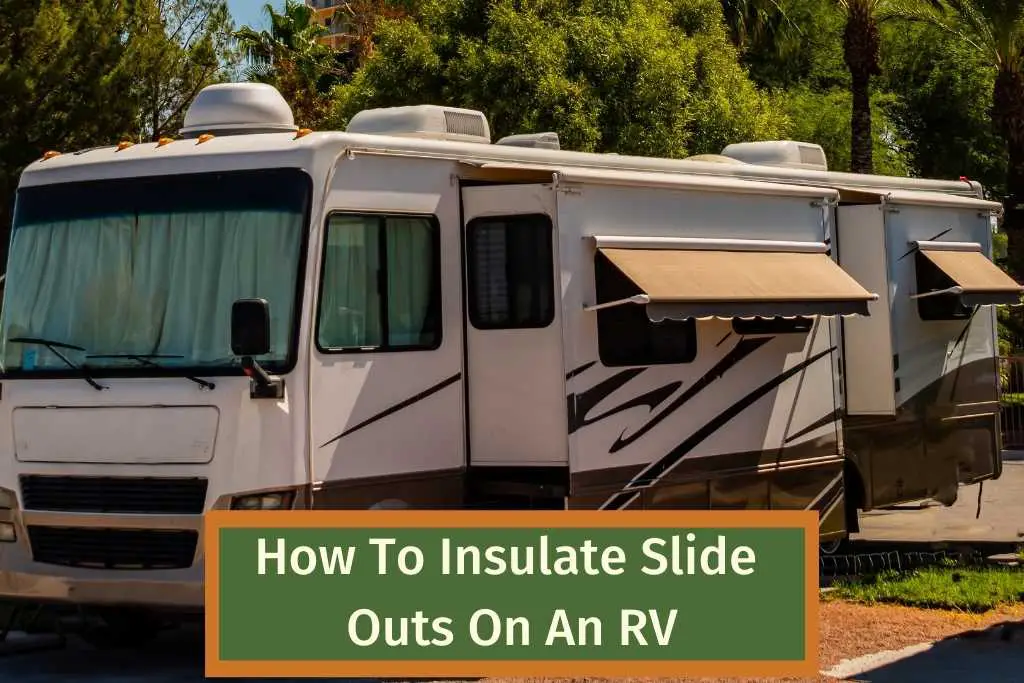The weather shouldn’t put you off your camping trip. Even if it’s freezing out, there are plenty of ways to insulate slide outs on an RV.
One of the easiest ways the cold air gets into your RV is through the slide out. RV side outs are less insulated than the rest of the RV and the cold air can easily come in through the seals.
Insulating slide outs on an RV isn’t too difficult. The best way to insulate your RV slide out is to use an RV slide out blanket and add insulation around the interior seams. This article will show you how to do both easily.
RV Slide Out Blanket
Your RV slide out is great for giving you the extra space but it is essentially a metal box that extends from your RV. They don’t have insulation so in the summer they will heat up like an oven and in the winter they will let all the cold air in. This will make the insulation on the rest of your RV redundant as they undo all that hard work.
One of the best ways to insulate your RV slide out is by wrapping it in an insulated blanket. This will insulate the thin metal top and sides of your RV.
Making your own insulating slide out blanket is really easy and pretty inexpensive. Here’s how.
- First gather your materials
You will need:
- Reflectix Insulation (measure up first)
- Tape measure
- HVAC tape
- White duct tape
- White Tarp (measure up first)
- Scissors or stanley knife
- Velcro tape
For the Reflectix insulation and tarp make sure that you measure up before you order so you get the right amount.
- Measure up
The blanket will completely cover the slide out, so you will need to measure the width and the length of the tarp and insulation you need.
To measure the width simply measure how far the slide out sticks out, so the width from the RV wall to the end of the slide out.
To measure the length you will need to add the two side lengths and the top and bottom of the slide out. The easiest way to do this is to measure one side and the bottom length of the slide out, then multiply by two. You will want to add a couple of inches onto this so you can velcro it together.
Add 2 inches to the width and length for the size of the tarp. This is so you can fully cover the insulation with it.
- Order your materials
When you have the measurements for the insulation and tarp then you can order the right amount. My recommendation for the insulation is Reflectix Insulation, and this tarp from Amazon is the cheapest I could find.
[elementor-template id=”2532″]
[elementor-template id=”2538″]
- Make the blanket
Now you have all your materials, you simply need to cut them to length. You can attach the lengths of insulation with the HVAC tape and the tarp using the white duct tape.
Lay your tarp on the floor and put the insulation on top of it. Make sure that the tarp is 1 inch bigger on every side.
Fold over the extra tarp and tape it to the insulation with the HVAC tape.
Now your insulation should be completely covered by the tarp on one side.
- Wrap your slide out
Now wrap your slide out with the blanket, the tarp should be on the outside and the foil insulation on the inside.
You should have a few inches of overlap. Use the velcro on each end of the blanket to fix it in place, you can add as much velcro as you see fit.
Now you have a complete blanket that’s easy to use to wrap your slide out. You should feel the benefit of this straight away.
RV Slide Outs Seals Insulation
The other area that slide outs let the cold in is the seals, you can even feel the cold air seeping in on a cold night through the seals.
The best way to insulate these are with cotton pipe insulation, here’s how:
- First gather your materials
You will need:
- Cotton Pipe Insulation Wrap (measure up first)
- Tape measure
- Scissors or stanley knife
Measure up before you buy the insulation so you know how much to get.
- Measure up
The insulation will be going along the interior seals so measure along them to get the length of insulation that you need.
- Order your materials
When you have the measurements for the insulation then you can order the right amount. This cotton pipe insulation wrap is perfect to fit in the seals of your slide out.
[elementor-template id=”2542″]
- Insulate your seals
This is even easier than making the blanket. All you need to do is stuff the pipe insulation into the seals.
If the insulation is too wide you can cut it in half or quarters lengthways to get a better fit. Once you stop the cold air getting in you will really feel the benefit.

Other Ways to Insulate Slide Outs on an RV
RV skirting is a great way to insulate your RV in the winter, although this applies more to the whole RV than just the slide out, it’s worth doing.
You should also make sure that there is no snow or ice on the roof of your slide out. Not only will that lower the temperature in your RV but it can cause water damage as the lower layer melts and becomes trapped.
You can also buy rigid insulation kits that fasten to your RV body, these typically include the skirting. Although I think the insulation blanket is an easier and more cost-effective way of getting the same results.
Why do I need to Insulate My RV Slide Out?
Your RV slide out is a weak spot for insulation. The top, bottom, and sides have no insulation, unlike the rest of your RV.
If you don’t insulate your RV slide out then the heat or cold that it lets in will make the insulation in the rest of your RV pointless.
Insulating your RV slide out will mean that you save precious energy heating or cooling your RV. This is even more important if you are boondocking or don’t have a hookup. Not to mention it will be cheaper in the long run.
It’s really easy to do and well worth the effort, you’ll wonder why you didn’t do it sooner.
Insulate Slide Outs On An RV Final Thoughts
The great thing about insulating your RV slide out is that it works in summer and winter. This will also impact the amount of electricity and propane you use for cooling or heating your RV.
Creating a slide out blanket is really easy and well worth the few dollars for the insulation. Insulating the inside of the seals works well too and will stop that trickle of cold air coming into your RV.

